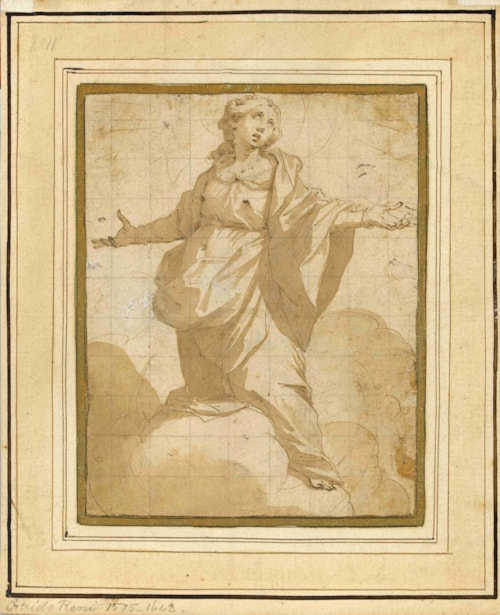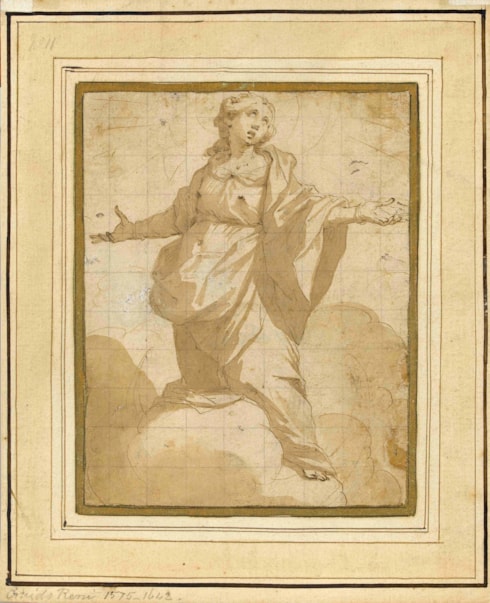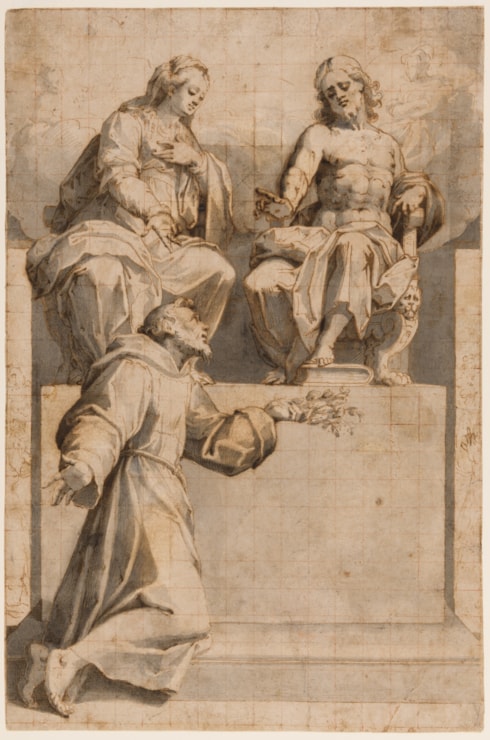
Giovanni Battista Trotti MALOSSO
Cremona 1556 - Parma 1619
Biography
Active as both a painter and an architect, Giovanni Battista Trotti, known as Il Malosso, was the foremost pupil of Bernardino Campi, whose studio he later inherited. Although his early works are indebted to the manner of Campi and such Cremonese contemporaries as Bernardino Gatti, he was also particularly influenced by the work of Correggio. From 1585 onwards he was especially active, painting numerous altarpieces for churches in Cremona, notably San Pietro al Po and Sant’Abbondio. The end of the 16th century and the beginning of the Seicento found Malosso working extensively throughout Lombardy - in Lodi, Pavia, Piacenza, Salò and Milan – as well elsewhere in Northern Italy, notably Genoa and Venice. In 1604 he settled in Parma, where he was employed at the court of the Duke Ranuccio Farnese. His work as a court artist in Parma included commissions for frescoes and portrait paintings, the decoration of various rooms in the Palazzo del Giardino, and temporary decorations for court festivals. He also supervised architectural projects, made designs for engravings and, for the Duke’s son Ottavio Farnese, was a painting teacher. Malosso’s work in Parma also included paintings for the Capuchin church at Fonteviva. Although firmly established as a court painter in Parma, Malosso continued to supervise a busy workshop in Cremona, where he provided several designs for altarpieces and frescoes. Among his most important pupils was Ermenegildo Lodi, who was active in Cremona between 1598 and 1616.
Malosso was admired as a draughtsman in his lifetime, and his drawings were sought after by collectors and connoisseurs long after his death. As the later 17th century Florentine biographer Filippo Baldinucci noted of the artist, ‘one sees a great many drawings by his hand done in pen and touches of wash with great clarity and facility’, while in the 18th century Giovanni Battista Zaist, in his biographical account of Cremonese artists, commented of Malosso that ‘the drawings of this renowned master, being works of consummate taste, have come to be held in the highest esteem; one therefore finds the greatest number of these in good collections not only in Cremona, Milan, and other nearby cities, but in the still more famous ones in Tuscany.’ Among the prominent 17th century collectors of Malosso’s drawings was Cardinal Leopoldo de’ Medici, much of whose collection is now in the Uffizi in Florence.



